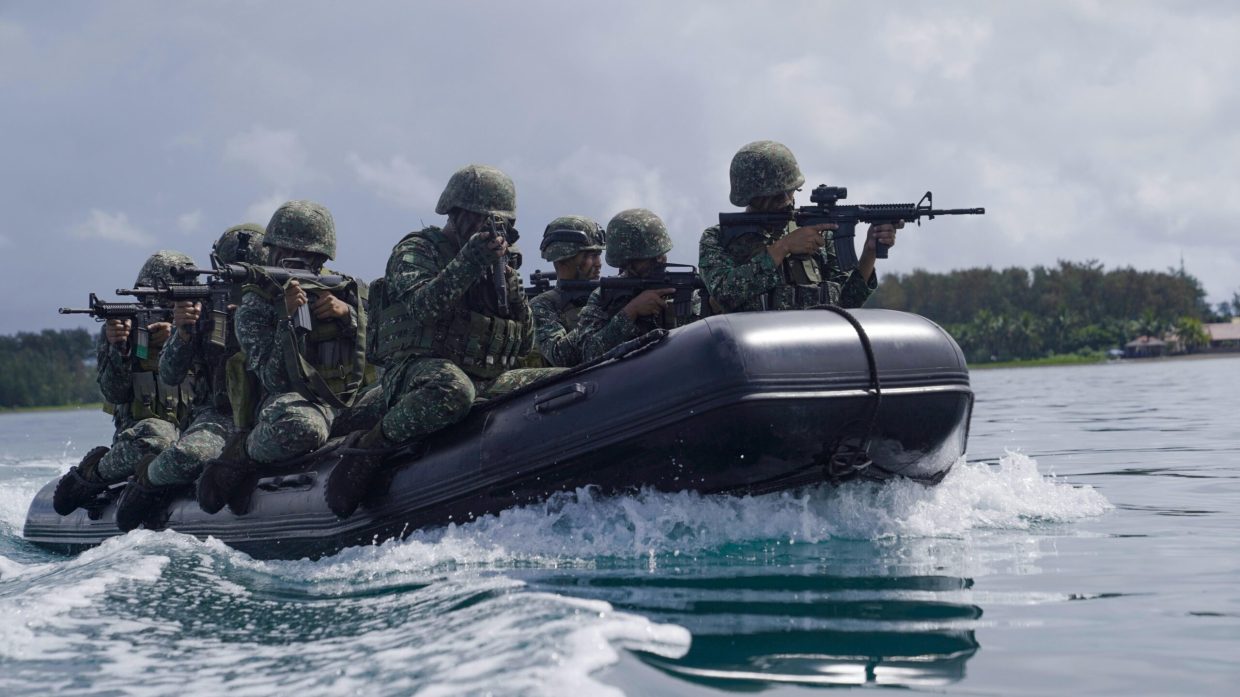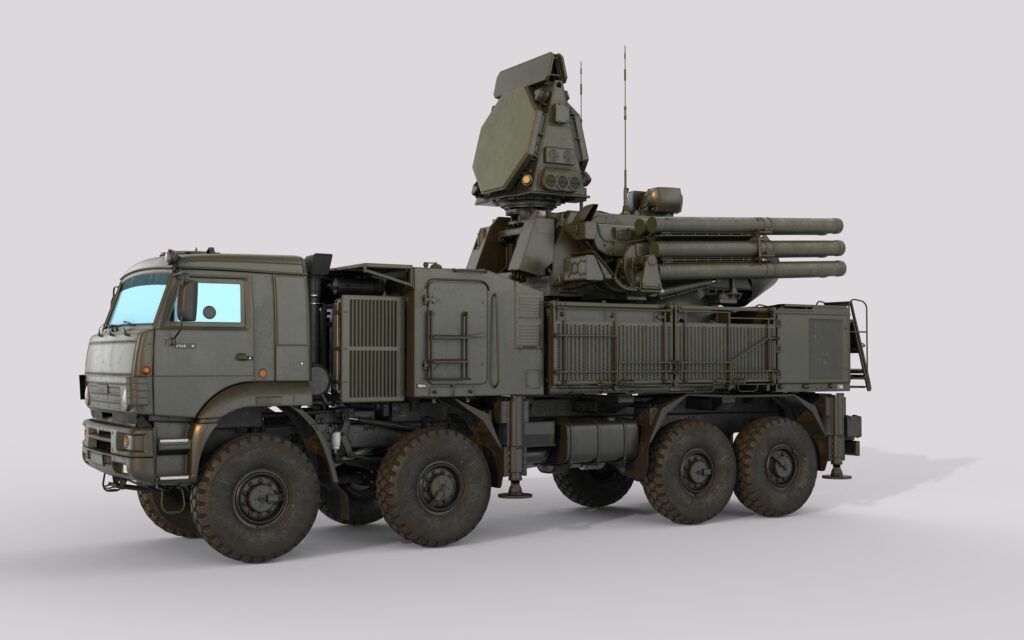When it comes to military history and strategy, few operations capture the imagination quite like amphibious assaults. From the historic beaches of Normandy on D-Day to contemporary joint-force operations, these complex maneuvers combine land, sea, and air elements in a high-stakes dance of coordination and courage. In this article, we’ll explore the evolution of amphibious assault strategies—examining how innovations in technology, tactics, and logistics have transformed these operations from the World War II era to the cutting-edge campaigns of modern warfare. Whether you’re a history enthusiast, a military professional, or simply curious about the art of war, this deep dive will shed light on the enduring significance and future trajectory of amphibious assaults.
Table of Contents
- Evolution of Amphibious Assault Tactics from World War II to Present Day
- Key Innovations in Equipment and Technology Enhancing Beachhead Success
- Integrating Joint Forces for Coordinated Modern Amphibious Operations
- Best Practices and Strategic Recommendations for Future Amphibious Campaigns
- Final Thoughts
Evolution of Amphibious Assault Tactics from World War II to Present Day
The trajectory of amphibious assault tactics has been marked by significant innovation and adaptation since the monumental landings of World War II. The D-Day invasion exemplified a massive, meticulously coordinated effort combining naval bombardment, air superiority, and ground troops storming fortified beaches under relentless enemy fire. This era emphasized large-scale frontal assaults, often relying heavily on sheer force and overwhelming numbers to secure beachheads. However, the high casualties and logistical challenges of these operations spurred a tactical evolution, focusing on faster, more flexible methods of insertion and improved integration between branches of the military. As technology advanced, landing craft gave way to amphibious vehicles and helicopters, reducing exposure and increasing rapid maneuverability across coastal defenses.
Modern amphibious warfare now integrates precision strikes, unmanned systems, and network-centric warfare to seize and hold vital coastal objectives. Key elements include:
- Advanced Surveillance: Drones and satellites provide real-time intelligence, allowing forces to anticipate enemy movements and react swiftly.
- Vertical Envelopment: Deploying troops via air assault behind enemy lines to disrupt defenses and create multiple points of attack.
- Joint Operations: Seamless coordination between the Navy, Marines, Air Force, and special operations units ensures adaptability across diverse environments.
- Rapid Mobility: Use of hovercraft, tiltrotor aircraft, and amphibious assault vehicles enables forces to bypass traditional choke points and establish beachheads with speed and surprise.
This multifaceted approach not only minimizes casualties but also maximizes operational tempo, reflecting the lessons learned from past battles while leveraging cutting-edge technology to dominate future littoral conflicts.
Key Innovations in Equipment and Technology Enhancing Beachhead Success
One of the pivotal factors that transformed amphibious assaults from high-risk ventures into controlled operations was the advancement of mechanized landing crafts. The introduction of the Landing Ship, Tank (LST) during World War II allowed troops, vehicles, and heavy equipment to be delivered directly onto hostile beaches, bypassing the need for established ports. These innovations reduced the vulnerability of initial waves and enabled a swift buildup of forces. Coupled with specialized armored vehicles like the Hobart’s Funnies, designed to clear obstacles and mines, the battlefield became more navigable and survivable immediately after landing.
In contemporary amphibious doctrine, technology has further evolved to enhance precision and adaptiveness. The deployment of amphibious assault vehicles (AAVs) equipped with advanced communications and navigation systems has improved coordination and responsiveness on chaotic shorelines. Moreover, the integration of unmanned systems—such as autonomous drones for reconnaissance and remote explosive ordnance disposal robots—provides real-time intelligence and risk mitigation without exposing personnel to unnecessary danger. Key innovations also include:
- Air-cushioned landing craft (LCACs): Capable of high-speed beach deployment over diverse terrain.
- Precision-guided munitions: Supporting pinpoint strikes prior to landings to suppress enemy defenses efficiently.
- Network-centric warfare systems: Connecting disparate units to enable seamless joint operations and quick adaptation.
Integrating Joint Forces for Coordinated Modern Amphibious Operations
Modern amphibious operations demand a seamless fusion of land, sea, and air units to achieve strategic objectives swiftly and efficiently. This integration involves not just the physical coordination of troops and equipment but also the synchronization of command and control systems, intelligence sharing, and logistical support. Joint forces leverage advanced communication networks and real-time data linkages to maintain constant situational awareness, allowing commanders to adapt swiftly to unfolding battlefield dynamics. The success of these operations hinges on interoperability between different branches, ensuring that marine infantry, naval fire support, and air assets operate as a cohesive, force-multiplier team rather than in isolated silos.
Several core principles facilitate this complex collaboration:
- Unified Command Structure: Establishes a clear hierarchy to coordinate efforts across branches, preventing overlap and confusion.
- Joint Training Exercises: Rehearsals develop trust and refine tactics among participating units, crucial for real-world execution.
- Technological Integration: Utilizes cutting-edge tools such as UAVs, satellite reconnaissance, and cyber capabilities to enhance operational visibility and precision.
Ultimately, the melding of joint forces in amphibious assaults transforms traditional combat into a multidimensional campaign where flexibility, speed, and precision are the keys to dominance on the modern battlefield.
Best Practices and Strategic Recommendations for Future Amphibious Campaigns
Success in amphibious operations demands rigorous preparation that blends innovation with the lessons of history. Commanders should prioritize integrated joint-force training, ensuring naval, air, and ground units operate seamlessly under high-pressure scenarios. Leveraging advanced simulation technology can replicate complex beachhead environments, allowing troops to adapt to variable weather, enemy defenses, and logistical challenges before setting foot on hostile shores. Furthermore, investment in rapid deployment logistics, including modular support units and autonomous resupply vessels, will be key to sustaining momentum during the critical initial phases of an assault.
Strategically, commanders must embrace flexible operational models that allow for dynamic adaptation to evolving combat conditions. This includes maintaining the capacity for real-time intelligence sharing across platforms, supported by AI-driven analytics to anticipate enemy maneuvers. A decentralized command approach can empower subordinate leaders to exploit fleeting opportunities without waiting for explicit orders, enhancing responsiveness and unit cohesion. Lastly, forging robust alliances for combined amphibious exercises will not only strengthen interoperability but also expand the tactical toolbox with diverse doctrines and technologies, providing a strategic edge in future campaigns.
- Emphasize joint-force integration and technology-driven training
- Develop modular, rapid deployment logistics systems
- Leverage AI for real-time intelligence and predictive analytics
- Adopt decentralized command structures for operational agility
- Expand multinational exercises to enhance coalition capabilities
Final Thoughts
As we’ve seen, amphibious assault strategies have evolved dramatically from the beaches of Normandy to today’s multifaceted operations. The lessons learned from D-Day continue to influence modern military planning, blending time-tested tactics with cutting-edge technology and precision coordination. Understanding this progression not only honors the bravery of those who came before but also highlights the ongoing importance of adaptability and innovation in amphibious warfare. Whether facing traditional battlegrounds or new hybrid threats, these strategies remain a critical component of global defense—and a testament to the enduring complexity of projecting power from sea to shore.













